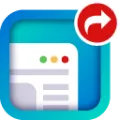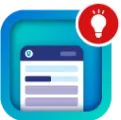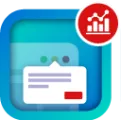Define Customizable Forecast Settings
- From Setup, enter Forecasts in the Quick Find box, then select Forecasts Settings.
- Select Forecast Revenue if you want forecasts to include revenue amount. If you disable this setting, you lose all revenue overrides on your forecasts.
- Select Forecast Quantity if you want forecasts to include quantity totals. If you disable this setting, you lose all quantity overrides on your forecasts.
- Choose a Forecast Period. If you do not have custom fiscal years enabled, choose monthly or quarterly depending on your organization’s forecasting cycle. The month or quarter start date is based on Greenwich Mean Time (GMT). If you have enabled custom fiscal years, you can choose to forecast by fiscal period or by fiscal quarter. The forecast period you choose determines the time increment your organization uses for quotas and forecasts. If you choose monthly, you can still see totals by quarters but, if you choose quarterly, monthly forecast totals are not available. If you change this setting, you lose all overrides and forecasts, including all forecast history.
- Choose a Forecast Date that determines how opportunity amounts contribute to forecasts:If you want the entire opportunity amount to contribute to the forecast period for thatdate, choose Opportunity Close Date. If your organization does not useproducts, this option is the only one available.If you want the amount of the product on the opportunity to contribute to the forecastperiod that corresponds with the Product Date, choose Product Date. When no products exist on an opportunity or the product date is blank, Salesforce uses the Opportunity Close Date in the user’s forecast instead.If you want the individual revenue schedule amounts to contribute to the forecast periodsthat correspond with the schedule dates, choose Schedule Date. If aproduct does not have a revenue schedule, Salesforce uses the Product Date in the user’s forecast instead.
- If you want the entire opportunity amount to contribute to the forecast period for thatdate, choose Opportunity Close Date. If your organization does not useproducts, this option is the only one available.
- If you want the amount of the product on the opportunity to contribute to the forecastperiod that corresponds with the Product Date, choose Product Date. When no products exist on an opportunity or the product date is blank, Salesforce uses the Opportunity Close Date in the user’s forecast instead.
- If you want the individual revenue schedule amounts to contribute to the forecast periodsthat correspond with the schedule dates, choose Schedule Date. If aproduct does not have a revenue schedule, Salesforce uses the Product Date in the user’s forecast instead.
- Choose a Forecast Type:Choose Use Overall Forecast if your organization does not useproducts. Your users have one forecast and one quota for each period. If your organizationdoes not use products, this option is the only one available.Choose Use Product Families if your users have one quota and oneforecast for each product family. See Organize Products with Product Families.
- Choose Use Overall Forecast if your organization does not useproducts. Your users have one forecast and one quota for each period. If your organizationdoes not use products, this option is the only one available.
- Choose Use Product Families if your users have one quota and oneforecast for each product family. See Organize Products with Product Families.
- Choose a default view for your users. This setting determines what forecast product family, date start, date range, and forecast totals to display for users when they first click the Forecasts tab. Users can change their view but the default remains the same for all users.
- Enable or disable forecast sharing by selecting or deselecting Enable Forecast Sharing.
- Click Save.If you have enabled forecast sharing, you are prompted to choose who can share existing forecast views. The options are: Require Administrator assistance for forecast sharing - Only administrators can share existing forecast data.Forecast managers can share their own forecast data - Administrators can share existing forecast data, and existing forecast managers can also share their own views.Note This choice applies to existing forecasting views only; it is not a default settingfor your organization. Each time you edit or assign a forecast manager in the role hierarchy,define who can share that view.If you have chosen to disable forecast sharing, you are prompted to confirm your choice.Customizable Forecasting includes five standard report types. You can’t create custom report types with Customizable Forecasting.
- Require Administrator assistance for forecast sharing - Only administrators can share existing forecast data.
- Forecast managers can share their own forecast data - Administrators can share existing forecast data, and existing forecast managers can also share their own views.





